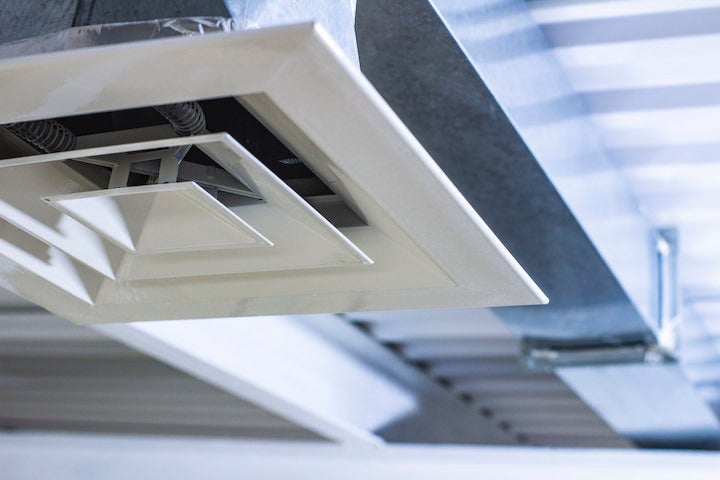Portable Air Cleaners:
Selection and Application Considerations for COVID-19 Risk Reduction
The Harvard Healthy Buildings Program published a report on the selection and application considerations of Portable Air Cleaners (PACs) for COVID-19 risk reduction. Engineering controls and Healthy Buildings measures are a key component of the “hierarchy of controls” that should be used in a holistic approach to COVID-19 risk reduction. PACs can be used as part of the engineering controls for healthy buildings. PACs, along with other engineering controls, can be used to reduce the concentration of aerosols in indoor spaces. Therefore, PACs can be used not only to reduce the risk of airborne transmission of COVID-19 in buildings, but also to reduce the exposure of occupants to other sources of airborne particles that have adverse health effects. It
should be noted that while this report was written to guide selection and application of PACs for reducing the transmission of COVID-19 in buildings, the key principles of PAC selection and application considerations provided in this report are applicable for protecting the occupants against other sources of airborne particles.
A short summary of some of the key consideration in selection and application of PACs are provided here:
● PAC Performance:
The most commonly used metric to characterize the effectiveness of air cleaners is Clean Air Delivery Rate (CADR). CADR is a function of 1) the single-pass efficiency of the filter and 2) the airflow rate passing through the filter. PACs with High Efficiency Particulate Air (HEPA) filters can remove the most airborne particles in a single pass, giving additional protection against airborne COVID-19 transmission. The rate of airflow passing through the filter plays a significant role as there is zero effectiveness if the filter is not operated.
● Things to consider while selecting a PAC:
Target at least 5 air changes per hour. In order to maintain good indoor air quality, the volume of air in the indoor space should be replaced with fresh outdoor air 5 times in an hour or one time every 12 minutes. If the outdoor air ventilation is not reliable, a room of 500 ft^2 area and 8 ft ceiling height should have a PAC with CADR of 300 cfm.
Here’s a walk-through example:
The area of a room is 450 ft2 and a ceiling height of 8 ft. To meet the 5 ACH target for this room, we calculate that 300 cfm of clean airflow rate is required, as shown below using the ACH equation.

The required 300 cfm clean airflow rate can be provided by the combination of outdoor air ventilation and PACs. If the outdoor air ventilation is capable of providing 100 cfm, the remaining 200 cfm should be provided by a PAC. Thus, at the fan speed that we intend to use, we should select a PAC or multiple PACs with CADRs totaling at least 200 cfm for tobacco smoke or dust.
Consider using multiple PACs. For larger spaces, multiple PACs can be used to achieve the target air change per hour (ACH) as they can be more effective than one large PAC.
Consider fan speeds that will be used. In order to reduce noise, air cleaners are sometimes operated at a lower speed which leads to the effectiveness drop of the aerosol removal. Therefore, the CADR at low fan speed and the noise level should be considered prior to purchase.
● Where to place PACs and how to maintain them:
PACs should be placed near occupants with no obstruction by other objects so that the clean airflow is at the breathing zone elevation rather than on the ground. They should not be used as fans (such that air is blowing across people). Overtime, as a PAC is operated, dust particles get deposited on the filter. Therefore, the PAC filters should be replaced periodically according to the
manufacturer recommendations. For further background and details on consideration of PAC selection and application you can read the paper here.
Citation:
Salimifard P., Jones E., Allen J. “Portable Air Cleaners: Selection and Application Considerations for COVID-19 Risk Reduction.” Harvard T.H. Chan School of Public Health Healthy Buildings Program, August, 2020. DOI: 10.13140/RG.2.2.21494.63043.





